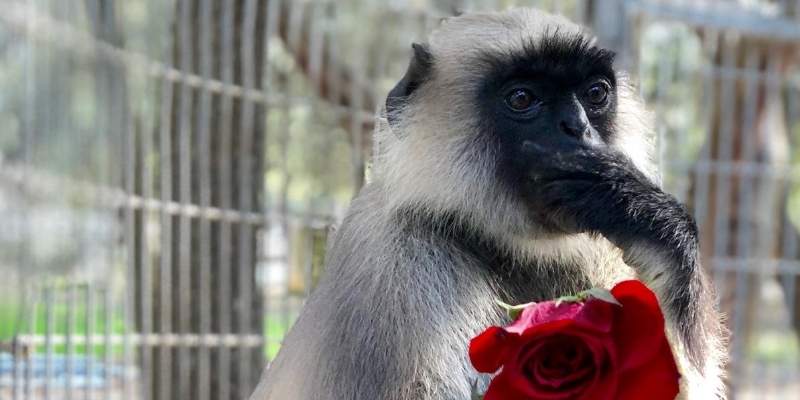We love BBC’s new nature series “Seven Worlds One Planet,” which show species on the various continents flourishing in their own way. We are especially delighted to see primates, which is why we were thrilled to get a rare glimpse of the golden-snub nosed monkey who lives within the deep mountain forests of China during an episode on Asia.
They have rounded covered with orange tan to golden dense fur and stunning pale blue faces.
At PPI we have a primate who also hails from the continent of Asia and is just as rare—hanuman langur Kalpana. She too is striking with her grey fur and jet black face. Endangered hanuman langurs, named after the Hindu monkey-god Hanuman, are considered sacred in India. They are also found in Pakistan, Bangladesh, Sri Lanka and Burma. Though not langurs, golden snub-nosed monkeys are often referred to as snub-nosed langurs in some local regions.
When Kalpana arrived at PPI from University of California Berkeley where she was used for behavioral research, we received little information about her past. Our staff decided to name her after Kalpana Chawla, the first Indian-born female U.S. astronaut. Kalpana means, “idea” or “imagination.” She has a reputation among care staff for her gentle nature. She enjoys inspecting care staff for any treats that may or may not be visible in their hands.
Ironically, because of their role in the Hindu religion, it is generally not considered detrimental to keep or capture the primates in their native habitat. In addition to being sold for research, unfortunately langurs are often sold as pets. And some groups with different religious beliefs will hunt langurs for food and for medicinal purposes. The biggest threats to langur habitats in India include logging, encroachment, as well as plantation and slash-and-burn agriculture.
Some notable characteristics of hanuman langurs are they live from sea level to 14,000 feet in altitude, the widest range for any primate other than humans; they eat 53 plant species and more insects than any other colobine; and they are the most terrestrial of any colobine, spending up to 80 percent of the day on the ground. Almost all feeding is within five meters of the ground.
Interestingly, in their native habitat, the hanuman langurs may associate with rhesus macaques as they compete for human offerings around temples.


